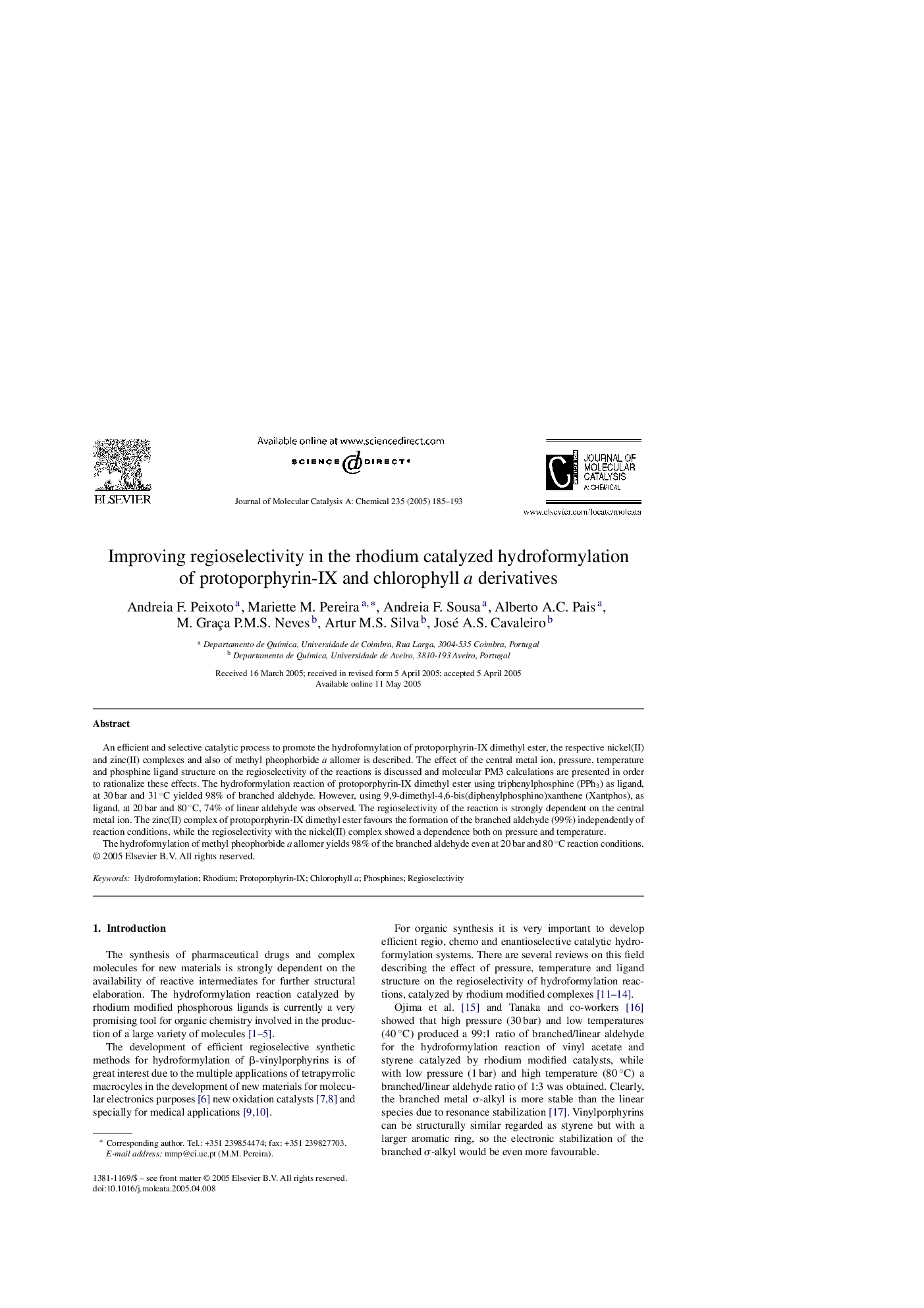| Article ID | Journal | Published Year | Pages | File Type |
|---|---|---|---|---|
| 9614657 | Journal of Molecular Catalysis A: Chemical | 2005 | 9 Pages |
Abstract
An efficient and selective catalytic process to promote the hydroformylation of protoporphyrin-IX dimethyl ester, the respective nickel(II) and zinc(II) complexes and also of methyl pheophorbide a allomer is described. The effect of the central metal ion, pressure, temperature and phosphine ligand structure on the regioselectivity of the reactions is discussed and molecular PM3 calculations are presented in order to rationalize these effects. The hydroformylation reaction of protoporphyrin-IX dimethyl ester using triphenylphosphine (PPh3) as ligand, at 30 bar and 31 °C yielded 98% of branched aldehyde. However, using 9,9-dimethyl-4,6-bis(diphenylphosphino)xanthene (Xantphos), as ligand, at 20 bar and 80 °C, 74% of linear aldehyde was observed. The regioselectivity of the reaction is strongly dependent on the central metal ion. The zinc(II) complex of protoporphyrin-IX dimethyl ester favours the formation of the branched aldehyde (99%) independently of reaction conditions, while the regioselectivity with the nickel(II) complex showed a dependence both on pressure and temperature.The hydroformylation of methyl pheophorbide a allomer yields 98% of the branched aldehyde even at 20 bar and 80 °C reaction conditions.
Related Topics
Physical Sciences and Engineering
Chemical Engineering
Catalysis
Authors
Andreia F. Peixoto, Mariette M. Pereira, Andreia F. Sousa, Alberto A.C. Pais, M. Graça P.M.S. Neves, Artur M.S. Silva, José A.S. Cavaleiro,
